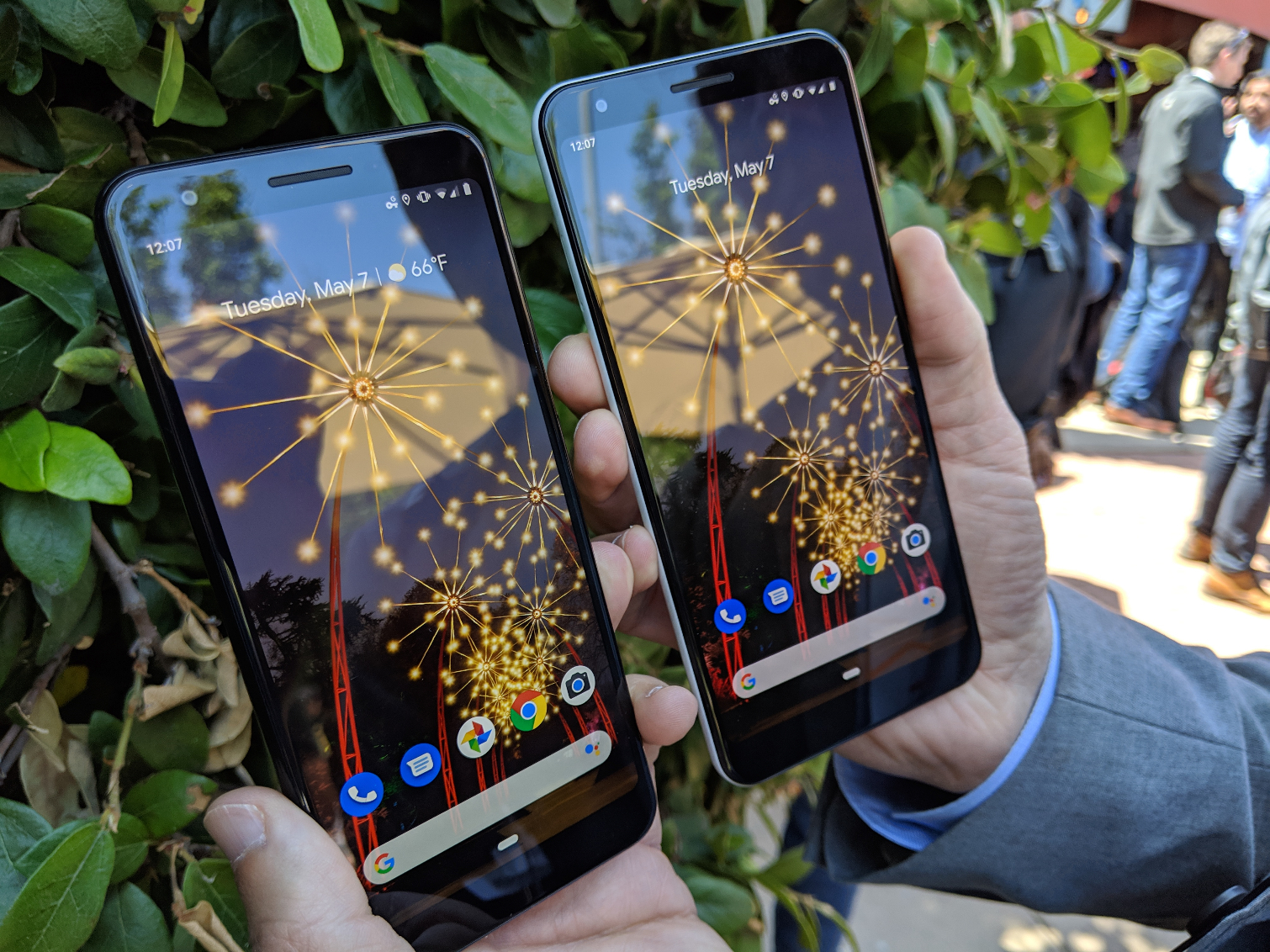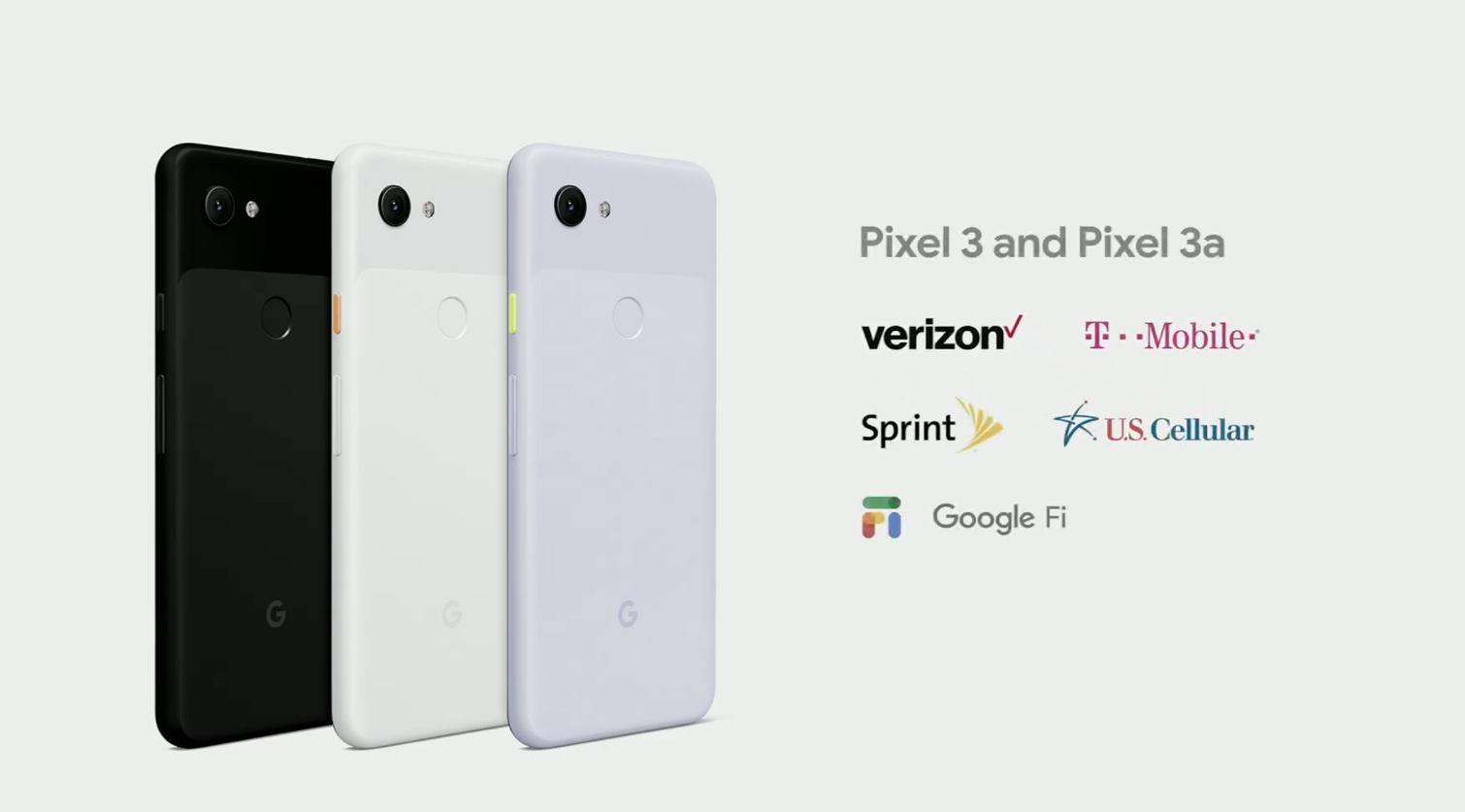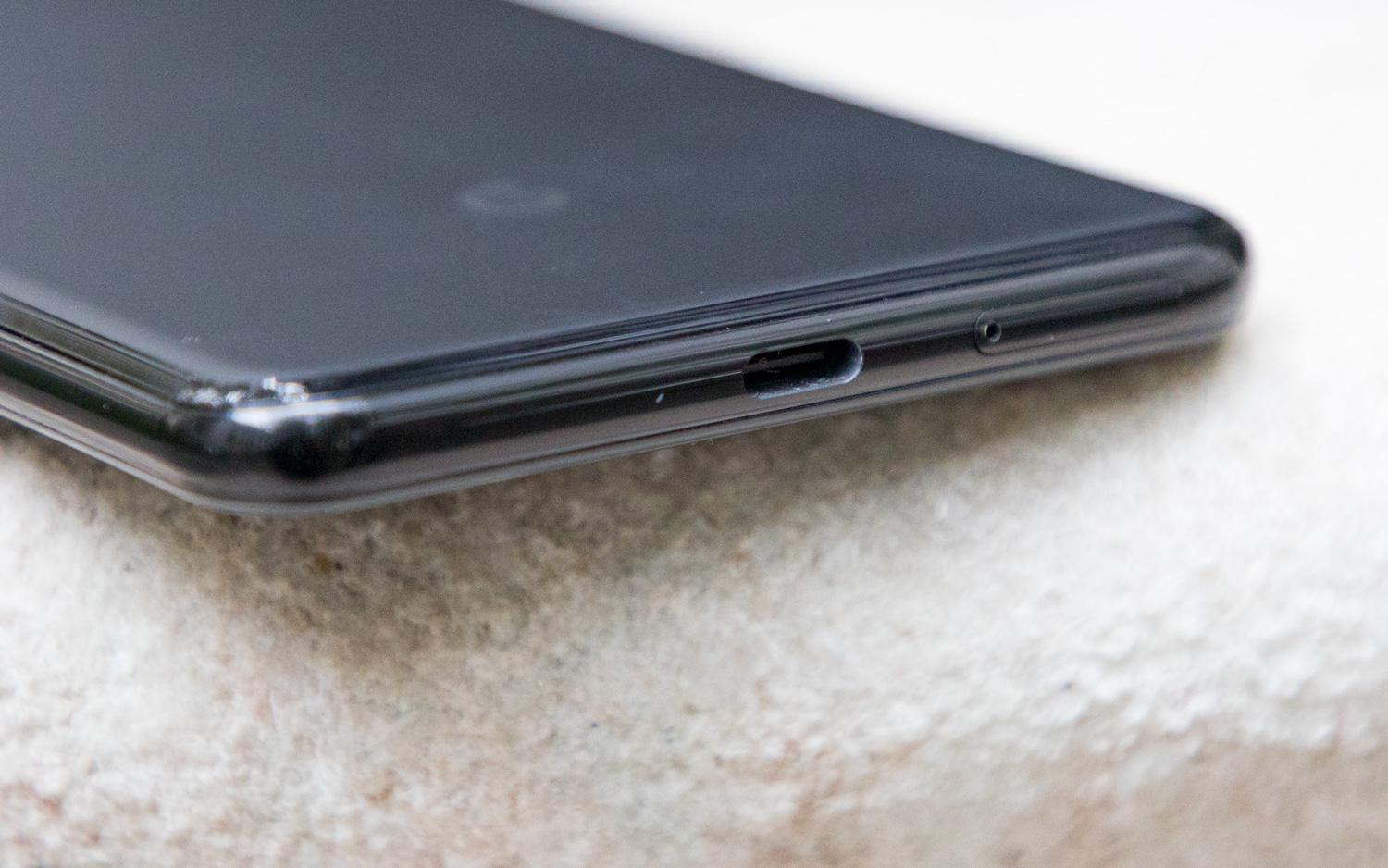Pixel 3a vs. Pixel 3: How Google's Budget Phone Stacks Up
Google’s finally come out with its less expensive Pixel 3a. Here’s how it differs from the premium model.
Updated, May 22 at 3:41 p.m. ET: We've added benchmarks and battery test results from our Pixel 3 and 3a XL reviews.
After years of rumors, Google has finally introduced its lower-cost Pixel 3a smartphone.
For buyers who want a solid handset but can’t be convinced to spend top dollar, the Pixel 3a offers a compelling proposition; you get a flagship-quality camera packed with Google’s imaging know how, an OLED display and of course pure Android Pie software backed with the latest and greatest AI features.

Indeed, the $399 Pixel 3a is a lot of phone for a lot less than the high-end Pixel 3 and 3 XL — in fact, it even looks almost exactly the same as those devices, which rank among the best smartphones available now. We've had a chance to review both the Pixel 3a and the Pixel 3a XL, and we think both new Google phones offer excellent cameras and a long-lasting battery, even if the lower price means some compromises in performance and design.
In fact, there are loads of differences between Google's different phones, that you should be aware of, as you try to decide which one to buy. Here's what you need to know about the Pixel 3a compared to the more expensive Pixel 3.
Design and Size
Like the Pixel 3 and 3 XL, the Pixel 3a series comes in two sizes. The standard model incorporates a display measuring 5.6 inches, while the larger variant features a 6-inch panel. Both feature 18:9 aspect ratios, though you’ll likely notice that the bezels aren’t quite as slim as they are on the premium Pixel handsets. There’s also no second front-facing speaker below the screen on the 3a phones.
Get instant access to breaking news, the hottest reviews, great deals and helpful tips.

Because the bezels are larger, you can expect that the 5.6-inch Pixel 3a will carve a taller and wider footprint than the 5.5-inch Pixel 3. Additionally, the 6-inch 3a XL has not inherited the 3 XL’s unsightly notch.
MORE: Pixel 3a and 3a XL Specs: Here's What You Get
While the high-end Pixels employ a glass back with a metal frame, Google has gone all plastic for the 3a duo. Additionally, the 3a and 3a XL utilize Asahi's Dragontrail glass over top of the display, which typically isn't quite as scratch- or shatter-resistant as Corning's Gorilla Glass. However, in changing the materials for the body, the design from the rear remains mostly intact. There’s still a mix of matte and glossy surfaces, with a rear-mounted fingerprint sensor slotted high in the middle. Under the surface, though, changes have been made, as Qi wireless charging is not supported in these less expensive devices.

At least the Pixel 3a and 3a XL have one feature their pricier siblings lack: 3.5-millimeter headphone jacks on the top edge, allowing you to use any old pair of earbuds to listen to music. The new phones also come in a new color, alongside traditional Just Black and Just White. Called Purple-ish, it combines a light, lavender hue with a green-yellow power key.
Price and Availability
The 5.6-inch Pixel 3a starts at $399, while the 6-inch 3a XL runs $479. Both only come with 64GB of storage. All Pixel 3a models are equipped with 4GB of RAM, which is the same as what the Pixel 3 and 3 XL offer, and once again there’s no microSD slot to expand space for media and apps.

For the first time, Google will be selling its handsets through another carrier beyond Verizon and its own Google Fi service alone. T-Mobile, Sprint, U.S. Cellular and Verizon's own discount carrier Visible will offer the devices both in-store and online. Additionally, the unlocked versions of the Pixel 3a, which you can buy direct from Google’s site, support both GSM-based and CDMA-based carriers, meaning they’ll work on any network that accepts unlocked phones.
Compare that to the price of the Pixel 3 and 3 XL, which start at $799 and $899, respectively, and you’re looking at sizable savings. However, it’s worth pointing out that Google frequently discounts its premium models (both the Pixel 3 and 3 XL have retailed for $200 off at numerous points since their release late last year), so be on the lookout for sales when weighing your options.
Pixel Specs Compared
| Phone | Pixel 3a | Pixel 3a XL | Pixel 3 | Pixel 3 XL |
| Starting Price | $399 | $479 | $799 | $899 |
| Screen (Resolution) | 5.6-inch OLED (2220 x 1080) | 6-inch OLED (2160 x 1080) | 5.5-inch OLED (2160 x 1080) | 6.3-inch OLED (2960 x 1440) |
| CPU | Snapdragon 670 | Snapdragon 670 | Snapdragon 845 | Snapdragon 845 |
| RAM | 4GB | 4GB | 4GB | 4GB |
| Storage | 64GB | 64GB | 64GB/128GB | 64GB/128GB |
| Rear Camera | 12MP (f/1.8) with OIS and EIS | 12MP (f/1.8) with OIS and EIS | 12MP (f/1.8) with OIS and EIS | 12MP (f/1.8) with OIS and EIS |
| Front Camera | 8MP (f/2.0) | 8MP (f/2.0) | 8MP wide-angle (f/2.2) and 8MP (f/1.8) | 8MP wide-angle (f/2.2) and 8MP (f/1.8) |
| Battery | 3,000mAh | 3,700mAh | 2,915mAh | 3,430mAh |
| Battery Life (Hrs:Mins) | 11:59 | 11:44 | 8:27 | 9:30 |
| Headphone Jack? | Yes | Yes | No | No |
| Colors | Clearly White, Just Black, Purple-ish | Clearly White, Just Black, Purple-ish | Clearly White, Just Black, Not Pink | Clearly White, Just Black, Not Pink |
| Size | 6 x 2.8 x 0.3 inches | 6.3 x 3 x 0.3 inches | 5.7 x 2.7 x 0.3 inches | 6.2 x 3 x 0.3 inches |
| Weight | 5.2 ounces | 5.9 ounces | 5.2 ounces | 6.5 ounces |
Display
You’d expect the Pixel 3a and 3a XL to make some sacrifices with respect to their displays, but you actually don’t out entirely in opting for the cheaper models. Google has fitted OLED panels to both 3a models, meaning their screens should be just as vibrant and crisp as those on the other third-generation Pixels.

In terms of resolution, both the 5.6-inch display in the 3a and the 6-inch one in the 3a XL sport a similar number of pixels: 2220 x 1080 for the 3a, and 2160 x 1080 for the 3a XL. (The slight difference is related to the fact that the 3a's screen actually has an 18.5:9 aspect ratio, compared to the 18:9 proportions of the 3a XL.) Both are about even with the full-HD+ panel in the 5.5-inch Pixel 3, but a bit less than the quad-HD+ 6.3-inch Pixel 3 XL.
Testing revealed some differences between the different Google phones. The Pixel 3 covers a wider range of colors, capturing 202% of the sRGB color spectrum to the 3a's 182.3%. The cheaper Pixel's colors are slightly more accurate, with a Delta-E rating of 0.18 compared to 0.22 for the Pixel 3. (Numbers closer to 0 are better.) The two displays have one thing in common, and it's an unfortunate trait: they're equally dim, with screens that measure 401 nits of brightness on a light meter.
Cameras
Just as Google has given these cheaper Pixels pretty excellent looking screens, it’s baked much of the same camera processing know-how into the 3a and 3a XL that the high-end Pixels already enjoy.

In the regular Pixel 3, a lot of that intelligence comes from the Pixel Visual Core — a dedicated image processing chip crafted by Google itself that is tasked with crunching images from the phones’ single 12.2-megapixel rear-facing camera and 8-MP selfie sensor. That silicon debuted in last year’s Pixel 2 and made it to the Pixel 3 — though it is surprisingly absent in the Pixel 3a.
Still, Google is using the Pixel 3a's main CPU and GPU to crunch those photos and unlock many of the same software-aided camera features. That includes Super Res Zoom, which uses AI to clean up digitally zoomed images so that the quality is almost comparable with what can be achieved with optical zoom, as well as Night Sight, which greatly improves visibility in dark scenarios. HDR+, Google’s clever HDR software, will also be a primary feature on these phones.

As far as optics are concerned, the Pixel 3a and 3a XL also receive a 12.2-MP single rear camera, which support optical and electronic image stabilization. But unlike the Pixel 3 and 3 XL, which have secondary wide-angle front-facing cameras for group selfies, these cheaper models only get a lone 8-MP lens on the front.
We found little difference when we put the cheaper Pixels' cameras to the test against their more expensive siblings. You'd really have to squint to spot the differences in this photo of scrambled eggs shot by both the Pixel 3a XL and Pixel 3 XL. The colors are equally vivid, and while the focus is a little deeper on the XL's shot, you'd be satisfied with what the 3a produces.
More impressively, features like Night Sight make a seamless transition to the Pixel 3a lineup. Again, there's little difference between what the 3a XL and 3XL produced in this shot of a dimly lit room. If you're expecting much of a difference in camera performance, other than the ability to take better group selfies on the more expensive Pixels, you're in for a pleasant surprise with the Pixel 3a.
Performance
Here’s where the Pixel 3a really shows its limitations compared to the premium model. Inside the new phones you won’t find a Qualcomm Snapdragon 845 CPU, like the regular Pixel 3 and 3 XL employ, but instead a less powerful Snapdragon 670 system-on-chip, along with 4GB of RAM and at least 64GB of storage.
MORE: Google Pixel 3a Review Roundup: What the Critics Are Saying
The 670 is by no means a slouch in terms of processing grunt — it's faster than the Snapdragon 632 in the Moto G7 and Snapdragon 636 inside the Nokia 7.1. The 670 also comes equipped with Qualcomm’s Spectra 250 image signal processor, which is similar to the ISP inside the Snapdragon 845, offering another clue that the Pixel 3a’s camera quality is for real.

However, there’s no shaking the fact that the Pixel 3a is at a performance deficit when compared to phones powered by Qualcomm’s 800-series chipsets. You can see that in the Geekbench 4 results, where the Pixel 3a finished well behind the Pixel 3's score, not to mention the score turned in by 2017's Pixel 2. Graphics testing was a similar story, where the more expensive Pixel produced better results.
The good news is that’s unlikely to seriously affect running most apps, though it will assuredly limit the phone’s gaming capabilities, and perhaps may even show some straining when multitasking or launching some apps. For what it's worth, both the Pixel 3a and 3a XL held up well in our testing.
Battery Life
Here’s at least one area where the Pixel 3a tops Google’s other phones. The 3a starts with a 3,000-mAh battery, which is actually larger than the 2,915-mAh unit inside the Pixel 3. And the 3a XL’s 3,700-mAh power pack is significantly bigger than the 3,430-mAh battery in the Pixel 3 XL.

Couple those beefier batteries with the Snapdragon 670 chipset, which is designed for efficiency over out-and-out power unlike the Snapdragon 845, and we’re looking at two phones that actually last longer than most devices in their price range and potentially many flagship devices, too.
The Pixel 3a lasted 11 hours, 59 minutes on our battery test, which involves continuous web surfing over T-Mobile's LTE network, while the Pixel 3a XL finished at 11:44. Both of those times outlasted the more expensive Pixel models, with the Pixel 3 running out of power after 8:27 and the Pixel 3 XL pooping out at 9:30. Score one for the less expensive Pixels.
Additionally, the Pixel 3a and 3a XL will utilize 18-watt USB-C Power Delivery for fast charging, again in keeping parity with the existing Pixel 3 line.
Which Pixel should you get?
The Pixel 3a offers much of what we love about Google’s flagships in a streamlined package for half the price. We love that the company has brought a top-notch camera and OLED screen to buyers on a budget, and the fact that Google is committing to three years of updates for the Pixel 3a ensures a premium Android experience in a segment of the market that typically gets overlooked on the software front.
That said, the less powerful processor might give some users a bit of pause, especially if they like to play demanding games. Opting for the Pixel 3a also means giving up more premium features like wireless charging and IP-68 water resistance, though some users will make that trade-off if it means saving $400 or so.
If you want the absolutely best performance, you'll wnat to stick with the Pixel 3 or 3 XL (or wait for the likely Snapdragon 855-powered Pixel 4 this fall). But if you have an eye on the bottom line, we've found that the Pixel 3a and 3a XL deliver some pretty impressive features while keeping a lid on the rising cost of smartphones.
Check out all the news Google announced at its developer conference on our Google I/O 2019 hub page.
Adam Ismail is a staff writer at Jalopnik and previously worked on Tom's Guide covering smartphones, car tech and gaming. His love for all things mobile began with the original Motorola Droid; since then he’s owned a variety of Android and iOS-powered handsets, refusing to stay loyal to one platform. His work has also appeared on Digital Trends and GTPlanet. When he’s not fiddling with the latest devices, he’s at an indie pop show, recording a podcast or playing Sega Dreamcast.
